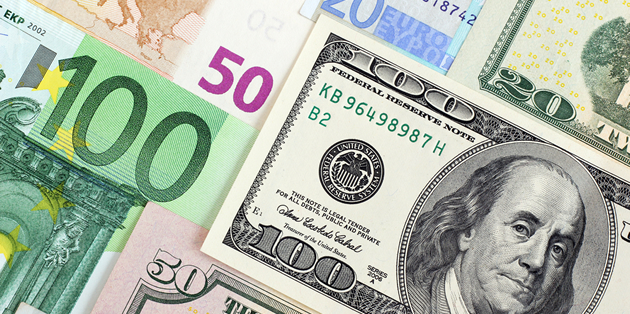- Euro exchange rates mixed on damp market sentiment – Global stocks struggle and bond yields fall
- Pound Sterling exchange rates recover from fresh lows overnight – Sterling recovered from a fresh 31-year low against the US Dollar on consolidative trade
- US Dollar exchange rates mixed – Trade data diappointed thanks to USD overvaluation
- EUR GBP forecast to struggle, EUR USD forecast to hold steady – Pound forecast to advance as investors take advantage of its low trade weighting
In response to disappointing domestic data, which saw German Industrial Production unexpectedly contract by -0.4%, Euro exchange rates declined versus the Pound and US Dollar. Sterling has recovered slightly from yesterday’s lows on consolidative trade but remains weak as yet more UK property funds suspend trade.
The EUR/GBP exchange rate is currently trending in the region of 0.8523, down -0.7% on the day’s opening levels but still up considerably from the week’s starting point of 0.82.
(Previously Updated July 6, 2016 @ 13:44)
Euro Exchange Rates Forecast to Struggle as Bond Yields Decline
With market sentiment dictating currency movement today the single currency has endured a mixed faring versus its major peers. A slight err towards depreciation, however, can be linked to disappointing domestic data results.
June’s German Retail PMI declined from 54.0 to 51.6. Of greater concern, however, was June’s Eurozone Retail PMI which dropped from 50.6 to 48.5, breaking through the 50 barrier that separates growth from contraction. The data shows that retail sales growth in the Eurozone was dragged down by Italy.
In response to the disappointing Eurozone Retail PMI, Phil Smith, economist at Markit stated;
‘The biggest talking point will be Italy’s sharp drop in sales, which contrasted with upturns across both France and Germany. Clearly consumer spending is on the wane in the Eurozone’s third-largest economy after recent tentative signs of recovery. But it was a brighter picture for retailers in France, where back-to-back increases in sales were recorded for the first time in two years and employment edged higher. Germany remained the best performer overall, although sales growth there eased from the solid pace seen in May.’
Also weighing on demand for the single currency is falling bond yields as safe-haven demand see prices rise. This is not a favourable outcome for the European Central Bank (ECB) given the massive asset purchase programme requires higher yields to be more impactful.
Euro Exchange Rates Edge Fractionally Higher against GBP as British Commercial Property Funds Struggle
In the wake of Brexit, investors have been pulling money from commercial property funds amid concerns that prices will fall significantly. Data from the Investment Association revealed that £360 million had been withdrawn from property funds in the build up to the EU referendum.
To combat a cycle of diminishing investment in commercial property, Standard Life, Aviva and M&G’s property funds have been suspended and others are likely to follow suit.
‘By limiting redemptions, funds would allow the uncertainty surrounding the UK’s political and economic environment to recede. In turn, this could stem fire sales, limiting the discounts at which funds would have to sell their holdings,’ said Capital Economics Eduardo Gorab.
Domestic data continues to have a limited impact, with trader focus dominated by the UK’s uncertain political and economic landscape.
Overnight the Pound fell to a fresh 31-year low against the US Dollar, with expectations of further losses if more commercial property investment funds are suspended.
Euro Exchange Rates Trending Narrowly against USD ahead of ISM Non-Manufacturing Data
With global equity markets down and commodity prices struggling, damp market sentiment saw the US Dollar advance versus most of its major peers.
Gains have been somewhat limited, however, amid concerns that US Dollar overvaluation will cause further delays to a Federal Reserve cash rate increase.
Policymakers have already cited Brexit as a reason to remain patient with regards to monetary policy, so investors will be wary of pushing US Dollar higher.
‘If there are broad contagions in financial markets [from Brexit], and if it leads to greater questions about the stability of the European Union, then it would have more severe consequences,’ stated New York Federal Reserve President William Dudley.
Although traders will want to avoid overvaluation, a positive result from June’s ISM Non-Manufacturing Composite will likely push the US Dollar higher versus its major peers. June’s result is expected to advance from 52.9 to 53.3.
The Euro to US Dollar (EUR USD) exchange rate was trending within the range of 1.1034 to 1.1080 during Wednesday’s European session.
The Euro to Pound Sterling (EUR GBP) exchange rate was trending within the range of 0.513 to 0.8627.



